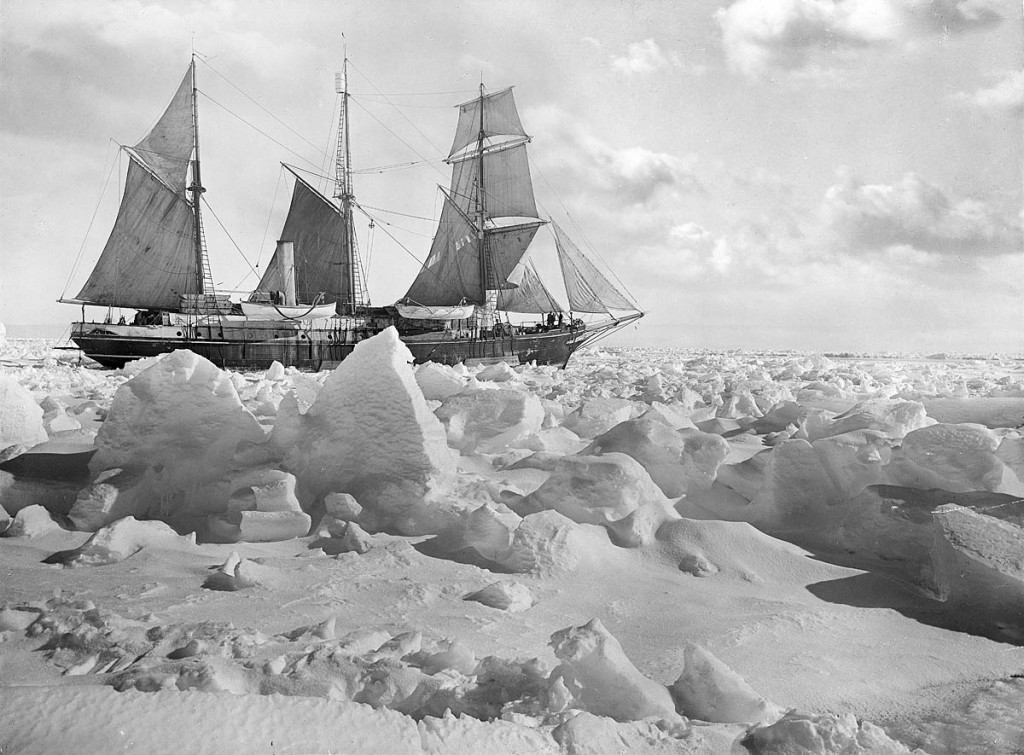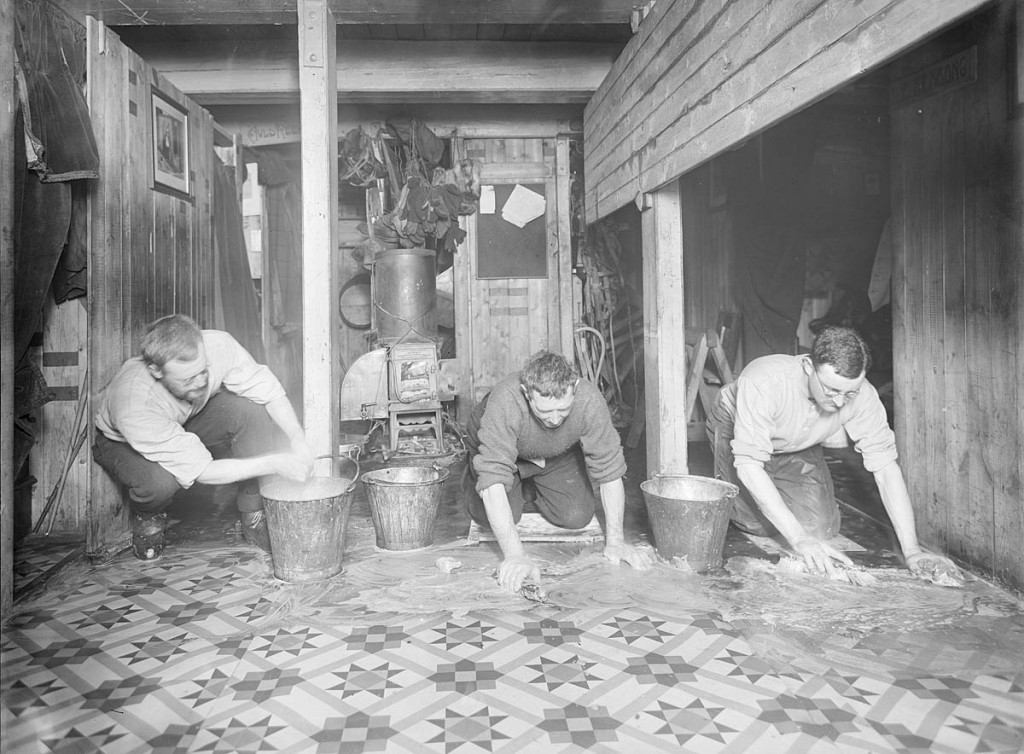An exhibition opens on Saturday to mark the centenary of one of the best known extreme survival stories.
Sir Ernest Shackleton’s Antarctic expedition came to an end on 21 November 1915 when his ship Endurance was crushed by sea ice and sank in the Weddell Sea.
A remarkable tale of survival followed, with Shackleton and five expedition members making an 800-mile sea journey before returning to rescue the remaining stranded men.
The Royal Geographical Society (with the Institute of British Geographers) is marking the 100th anniversary of the ship’s demise with an exhibition of photographs taken by the expedition photographer Frank Hurley. The fragile glass plates and celluloid negatives in the society’s collections have been digitised for the first time to reveal previously unseen details of the expedition both before and after the Endurance was crushed.
The Enduring Eye exhibition will open to the public on Saturday 21 November. At the heart of the exhibition are more than 90 high-resolution images, taken by Hurley, and saved by him under the most extreme circumstances to provide a lasting record of the men of the Endurance and their story.
An RGS spokesperson said: “For the first time, the fragile glass plate and celluloid negatives, stored securely at the Royal Geographical Society (with IBG) for more than 80 years, have been digitised directly from the originals.
“Now viewed at full definition, the images unlock the remarkable detail captured originally by Hurley in his photographic processing, including interior images of the Endurance and high resolution information of life on the pack ice of the Weddell Sea.
“As one of the first truly modern documentary photographers and film-makers, Australian-born Hurley hoped to have his images seen at as large-scale size as possible. 100 years later, this intention will be honoured with giant dimension prints, some over 2m in width and height, at the heart of the exhibition, providing viewers with a sense of awe and wonder.”
The Imperial Trans-Antarctic Expedition of 1914–17, also known as the Endurance Expedition, was an attempt to make the first land crossing of the Antarctic continent.
The expedition was led by Sir Ernest Shackleton, who had previously served on Captain Scott’s Discovery Expedition and the British Antarctic Expedition of 1907-09. After leaving England on 8 August 1914, the Endurance sailed via Buenos Aires and South Georgia before departing for the Antarctic on 5 December. At the same time, a supporting group, the Ross Sea Party, travelled to the other side of the continent.
Early in the Endurance’s expedition, the ship and its 28-man complement became trapped in the pack ice of the Weddell Sea and drifted northward throughout the Antarctic winter of 1915. Eventually the ship was crushed and sank on 21 November 1915, stranding its crew on the drifting ice.
After months spent in makeshift camps as the ice continued its northwards drift, the party took to three lifeboats to reach the inhospitable and uninhabited Elephant Island. Shackleton and five others then made an 800-mile open-boat journey in the James Caird to reach South Georgia, crossing the island on foot to raise the alarm, before returning to Elephant Island to rescue those still stranded.”
The exhibition will also include a number of ‘precious survivors’ – personal artefacts that were carried through every stage of the successive journeys for survival from the Weddell Sea to Elephant Island and onto South Georgia. These include the Bible from the Society’s collections, originally presented to Shackleton by Queen Alexandra on visiting the Endurance on 16 July 1914 and inscribed by her.
The exhibition has been researched, written and curated by Meredith Hooper, the Antarctic historian, writer and broadcaster, from original source material in the UK, Australia and New Zealand, whilst also drawing also on information provided by descendants of some of the 28 men on the expedition.
The Enduring Eye is supported by the UK Antarctic Heritage Trust, with the Governments of the British Antarctic Territory and South Georgia & the South Sandwich Islands and the Royal Commission for the Exhibition of 1851.
The exhibition is being staged at the Royal Geographical Society (with the Institute of British Geographers), 1 Kensington Gore, London SW7 2AR.


jan lewis
20 November 2015yet another exhibition,that wont be seen by anyone outside of london!